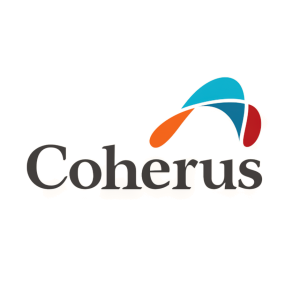CIMERLI® (ranibizumab-eqrn) Sales Exceed 100,000 Doses in First Year of Launch
– CIMERLI® is the #1 ranibizumab biosimilar with
– Demonstrated safety and efficacy in clinical trials and real-world settings –
– Robust and reliable supply addresses market need and expands anti-VEGF options across the retinal market –
REDWOOD CITY, Calif., Oct. 04, 2023 (GLOBE NEWSWIRE) -- Coherus BioSciences, Inc. (Coherus, Nasdaq: CHRS), today announced that sales of CIMERLI® (ranibizumab-eqrn) to retinal specialists have exceeded 100,000 doses since commercial launch on October 3, 2022. CIMERLI® is the first and only FDA-approved biosimilar interchangeable with Lucentis® for all approved indications. In August 2023, CIMERLI® achieved
“Eclipsing 100,000 doses sold to retinal specialists within the first full year after commercial launch is an important milestone for CIMERLI® and reinforces the retinal community’s desire for a safe and effective biosimilar option to LUCENTIS®,” said Paul Reider, Chief Commercial Officer of Coherus. “Achieving
“Over the past twelve months we have launched three new products: CIMERLI®, the UDENYCA® auto-injector and YUSIMRY™. We now look forward to the potential approvals of two more products this year: toripalimab for nasopharyngeal carcinoma and the UDENYCA® on-body injector, and their subsequent launches,” said Denny Lanfear, Chairman and Chief Executive Officer of Coherus.
Coherus plans to report CIMERLI® net sales for the third quarter when the company reports Q3 2023 financial results in November.
About CIMERLI®
CIMERLI® (ranibizumab-eqrn) is the only FDA-approved biosimilar interchangeable with Lucentis® for all Lucentis® FDA-approved indications. Formerly CHS-201 (also known as FYB201), it is a biosimilar to the reference product, U.S.-licensed Lucentis®. CIMERLI® has the same product attributes as Lucentis®, in terms of dosage strengths (0.3 mg, 0.5 mg), formulation and excipients, and amino acid sequence. CIMERLI® was approved by the FDA on August 2, 2022. Coherus owns the biologics license application (BLA) for CIMERLI® and commercial rights in the U.S. and its territories. Coherus licensed CIMERLI® from Bioeq AG, a joint venture between Polpharma Biologics Group B.V. and Formycon AG.
*IQVIA NSP Data August 2023.
1. CIMERLI® (ranibizumab-eqrn) U.S. Prescribing Information, August 2022.
https://www.accessdata.fda.gov/drugsatfda_docs/label/2022/761165s000lbl.pdf
IMPORTANT SAFETY INFORMATION & INDICATIONS
CIMERLI® (ranibizumab-eqrn) is interchangeable* to Lucentis® (ranibizumab injection)
CIMERLI® (ranibizumab-eqrn), a vascular endothelial growth factor (VEGF) inhibitor, is indicated for the treatment of patients with:
- Neovascular (Wet) Age-Related Macular Degeneration (AMD)
- Macular Edema Following Retinal Vein Occlusion (RVO)
- Diabetic Macular Edema (DME)
- Diabetic Retinopathy (DR)
- Myopic Choroidal Neovascularization (mCNV)
CONTRAINDICATIONS
- CIMERLI® is contraindicated in patients with ocular or periocular infections or known hypersensitivity to ranibizumab products or any of the excipients in CIMERLI®. Hypersensitivity reactions may manifest as severe intraocular inflammation
WARNINGS AND PRECAUTIONS
- Endophthalmitis and Retinal Detachments: Intravitreal injections, including those with ranibizumab products, have been associated with endophthalmitis and retinal detachments. Proper aseptic injection technique should always be utilized when administering CIMERLI®. Patients should be monitored following the injection to permit early treatment, should an infection occur
- Increases in Intraocular Pressure: Increases in intraocular pressure (IOP) have been noted both pre-injection and post-injection (at 60 minutes) with ranibizumab products. Monitor intraocular pressure prior to and following intravitreal injection with CIMERLI® and manage appropriately
- Thromboembolic Events: Although there was a low rate of arterial thromboembolic events (ATEs) observed in the ranibizumab clinical trials, there is a potential risk of ATEs following intravitreal use of VEGF inhibitors. ATEs are defined as nonfatal stroke, nonfatal myocardial infarction, or vascular death (including deaths of unknown cause)
Neovascular (wet) age-related macular degeneration
- The ATE rate in the 3 controlled neovascular AMD studies during the first year was
1.9% (17 of 874) in the combined group of patients treated with 0.3 mg or 0.5 mg ranibizumab compared with1.1% (5 of 441) in patients from the control arms. In the second year of Studies AMD-1 and AMD-2, the ATE rate was2.6% (19 of 721) in the combined group of ranibizumab-treated patients compared with2.9% (10 of 344) in patients from the control arms. In Study AMD-4, the ATE rates observed in the 0.5 mg arms during the first and second year were similar to rates observed in Studies AMD-1, AMD-2, and AMD-3 - In a pooled analysis of 2-year controlled studies (AMD-1, AMD-2, and a study of ranibizumab used adjunctively with verteporfin photodynamic therapy), the stroke rate (including both ischemic and hemorrhagic stroke) was
2.7% (13 of 484) in patients treated with 0.5 mg ranibizumab compared to1.1% (5 of 435) in patients in the control arms (odds ratio 2.2 [95% confidence interval (0.8-7.1)])
Macular edema following retinal vein occlusion
- The ATE rate in the 2 controlled RVO studies during the first 6 months was
0.8% in both the ranibizumab and control arms of the studies (4 of 525 in the combined group of patients treated with 0.3 mg or 0.5 mg ranibizumab and 2 of 260 in the control arms). The stroke rate was0.2% (1 of 525) in the combined group of ranibizumab-treated patients compared to0.4% (1 of 260) in the control arms
Diabetic macular edema and Diabetic Retinopathy
- In a pooled analysis of Studies D-1 and D-2, the ATE rate at 2 years was
7.2% (18 of 250) with 0.5 mg ranibizumab,5.6% (14 of 250) with 0.3 mg ranibizumab, and5.2% (13 of 250) with control. The stroke rate at 2 years was3.2% (8 of 250) with 0.5 mg ranibizumab,1.2% (3 of 250) with 0.3 mg ranibizumab, and1.6% (4 of 250) with control. At 3 years, the ATE rate was10.4% (26 of 249) with 0.5 mg ranibizumab and10.8% (27 of 250) with 0.3 mg ranibizumab; the stroke rate was4.8% (12 of 249) with 0.5 mg ranibizumab and2.0% (5 of 250) with 0.3 mg ranibizumab - Fatal events in patients with diabetic macular edema and diabetic retinopathy at baseline: A pooled analysis of Studies D-1 and D-2 showed that fatalities in the first 2 years occurred in
4.4% (11 of 250) of patients treated with 0.5 mg ranibizumab, in2.8% (7 of 250) of patients treated with 0.3 mg ranibizumab, and in1.2% (3 of 250) of control patients. Over 3 years, fatalities occurred in6.4% (16 of 249) of patients treated with 0.5 mg ranibizumab and in4.4% (11 of 250) of patients treated with 0.3 mg ranibizumab. Although the rate of fatal events was low and included causes of death typical of patients with advanced diabetic complications, a potential relationship between these events and intravitreal use of VEGF inhibitors cannot be excluded
ADVERSE REACTIONS
- Serious adverse events related to the injection procedure have occurred in <
0.1% of intravitreal injections, including endophthalmitis, rhegmatogenous retinal detachment, and iatrogenic traumatic cataract - In ranibizumab-treated patients compared with the control group, the most common ocular side effects included conjunctival hemorrhage, eye pain, vitreous floaters, and intraocular pressure. The most common non-ocular side effects included nasopharyngitis, anemia, nausea, and cough
- As with all therapeutic proteins, there is the potential for an immune response in patients treated with ranibizumab products. The clinical significance of immunoreactivity to ranibizumab products is unclear at this time
Postmarketing Experience
The following adverse reaction has been identified during post-approval use of ranibizumab products:
- Ocular: Tear of retinal pigment epithelium among patients with neovascular AMD
*An interchangeable product (IP) is a biological product that is approved based on data demonstrating that it is highly similar to an FDA-approved reference product (RP) and that there are no clinically meaningful differences between the products; it can be expected to produce the same clinical result as the RP in any given patient; and if administered more than once to a patient, the risk in terms of safety or diminished efficacy from alternating or switching between use of the RP and IP is not greater than that from the RP without such alternation or switch. Interchangeability of CIMERLI® has been demonstrated for the condition(s) of use, strength(s), dosage form(s), and route(s) of administration described in its Full Prescribing Information
To report SUSPECTED ADVERSE REACTIONS, contact Coherus BioSciences at 1-800-483-3692 or FDA at 1-800-FDA-1088 or www.fda.gov/medwatch.
For additional Safety Information, please see CIMERLI® Full Prescribing Information available here.
About Coherus BioSciences
Coherus is a commercial-stage biopharmaceutical company focused on the research, development and commercialization of innovative immunotherapies to treat cancer. Coherus’ strategy is to build a leading immuno-oncology franchise funded with cash generated through net sales of its diversified portfolio of FDA-approved therapeutics.
In 2021, Coherus in-licensed toripalimab, an anti-PD-1 antibody, in the United States and Canada. The Biologics License Application for toripalimab in combination with chemotherapy as treatment for recurrent or metastatic nasopharyngeal carcinoma is currently under review by the FDA.
Coherus markets UDENYCA® (pegfilgrastim-cbqv), a biosimilar of Neulasta®, CIMERLI® (ranibizumab-eqrn), a biosimilar of Lucentis®, and YUSIMRY™ (adalimumab-aqvh), a biosimilar of Humira®.
Forward-Looking Statements
Except for the historical information contained herein, the matters set forth in this press release are forward-looking statements within the meaning of the "safe harbor" provisions of the Private Securities Litigation Reform Act of 1995, including, but not limited to, statements regarding Coherus’ ability to build its immuno-oncology franchise to achieve a leading market position; Coherus’ ability to generate cash and net sales; Coherus’ investment plans; Coherus’ ability to achieve approvals or launches of any of its product candidates; and expectations about maintaining or growing sales for any of Coherus’ products.
Such forward-looking statements involve substantial risks and uncertainties that could cause Coherus’ actual results, performance or achievements to differ significantly from any future results, performance or achievements expressed or implied by the forward-looking statements. Such risks and uncertainties include, among others, the risks and uncertainties inherent in the clinical drug development process; risks related to integration of Surface Oncology, Inc.’s programs and operations; risks related to Coherus’ existing and potential collaboration partners; risks of Coherus’ competitive position; the risks and uncertainties of the regulatory approval process, including the speed of regulatory review, international aspects of Coherus’ business and the timing of Coherus’ regulatory filings; the risk of FDA review issues; the risk that Coherus is unable to complete commercial transactions and other matters that could affect the availability or commercial potential of Coherus’ products and product candidates; and the risks and uncertainties of possible litigation. All forward-looking statements contained in this press release speak only as of the date of this press release. Coherus undertakes no obligation to update or revise any forward-looking statements. For a further description of the significant risks and uncertainties that could cause actual results to differ from those expressed in these forward-looking statements, as well as risks relating to Coherus’ business in general, see Coherus’ Quarterly Report on Form 10-Q for the fiscal quarter ended June 30, 2023 filed with the Securities and Exchange Commission on August 2, 2023, including the section therein captioned “Risk Factors” and in other documents Coherus files with the Securities and Exchange Commission.
UDENYCA®, CIMERLI® and YUSIMRY™, whether or not appearing in large print or with the trademark symbol, are trademarks of Coherus, its affiliates, related companies or its licensors or joint venture partners unless otherwise noted. Trademarks and trade names of other companies appearing in this press release are, to the knowledge of Coherus, the property of their respective owners.
Coherus Contact Information:
For Investors & Media
Jodi Sievers, VP, Corporate Communications
ir@coherus.com










